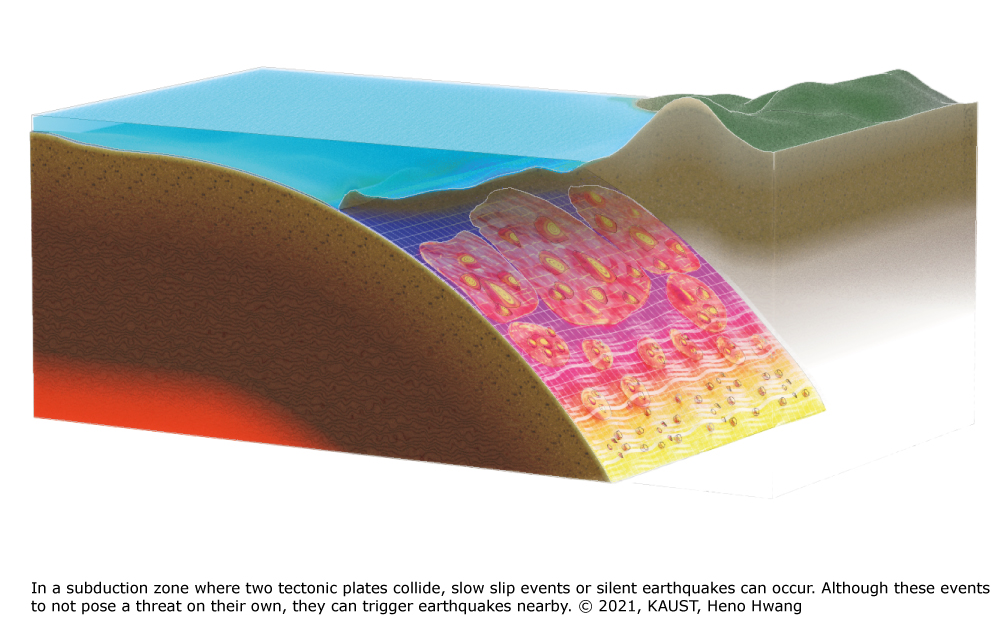2021-08-05
A better understanding of slow slips offers insights into earthquakes
Earthquakes are caused by the sudden release of stress along faults in the Earth's crust. The resulting seismic waves of this fast ruptures of the Earth crust propagate through the ground, causing the shaking we perceive as earthquakes. But there are also more gentle processes, non-shaky versions of seismic fractures. These so-called "slow slips" attracted the attention of a research team from the Swiss Seismological Service at ETH Zürich, the King Abdullah University of Science and Technology (KAUST) in Saudi Arabia, the University of Geneva in Switzerland, the German Research Centre for Geoscience (GFZ) and the University of Bologna in Italy.
Slow slip events are fractures of the Earth's crust that propagate very slowly without generating considerable ground shaking. This fracture process can last from less than a day to more than a year. Yet, slow slips have the potential of triggering earthquakes or earthquakes swarms – a process that is not fully understood so far.
Read more...Slow slips are most common in regions where tectonic plates slide over each other (in subduction zones), especially all around the edge of the Pacific Ocean, including Japan, New Zealand, North and Central America or near volcanoes such as Mt. Etna in Italy or Kilauea in Hawaii.
The team analysed the correlation between the characteristics of each slow event and the triggered seismic activity. The results show that shallower slow slips are more likely to generate larger seismicity compared to deeper slow slip processes. This information can now be used to improve a model to predict the changes and hazards associated with these specific types of events. The researchers hope that the database and modelling can be developed further to build a better understanding of those complex processes.
The research was recently published in the scientific journal “Science Advances” and is accessible under the following link: https://advances.sciencemag.org/lookup/doi/10.1126/sciadv.abg9718
